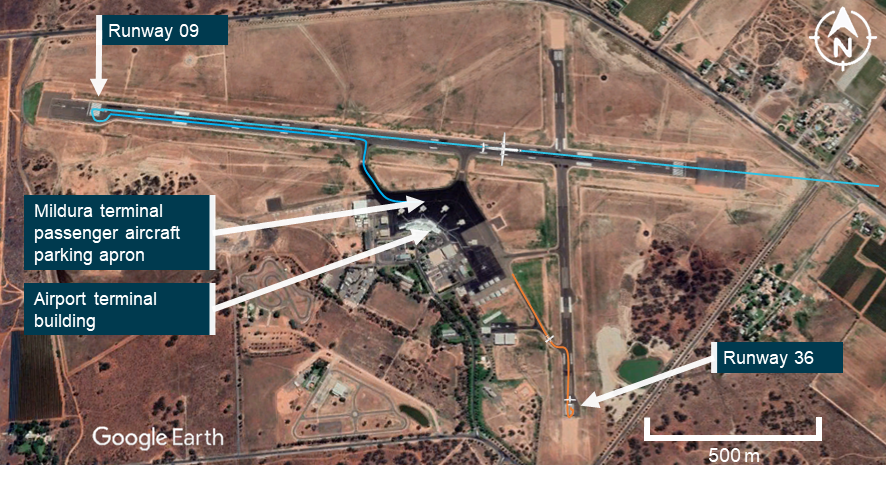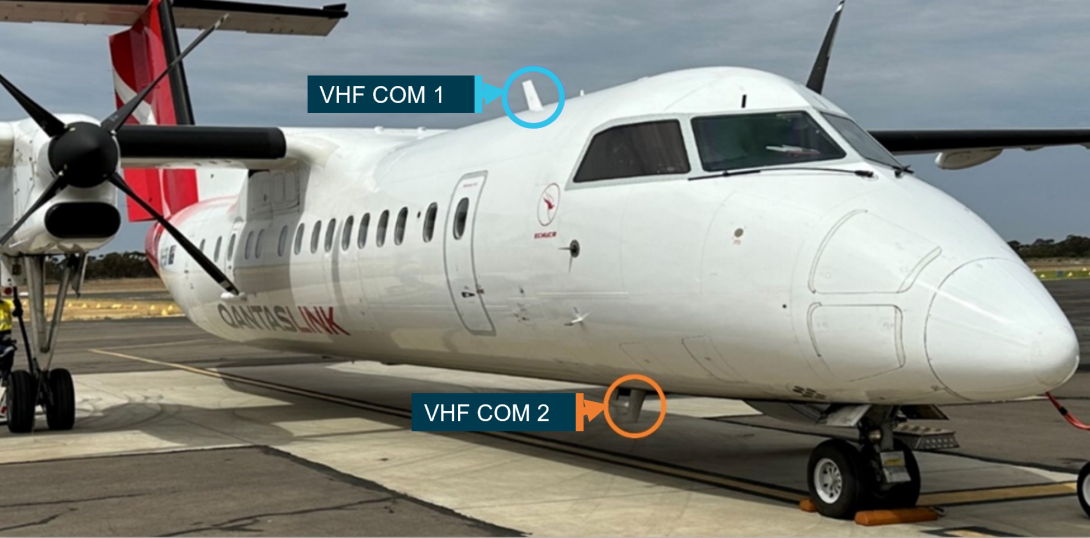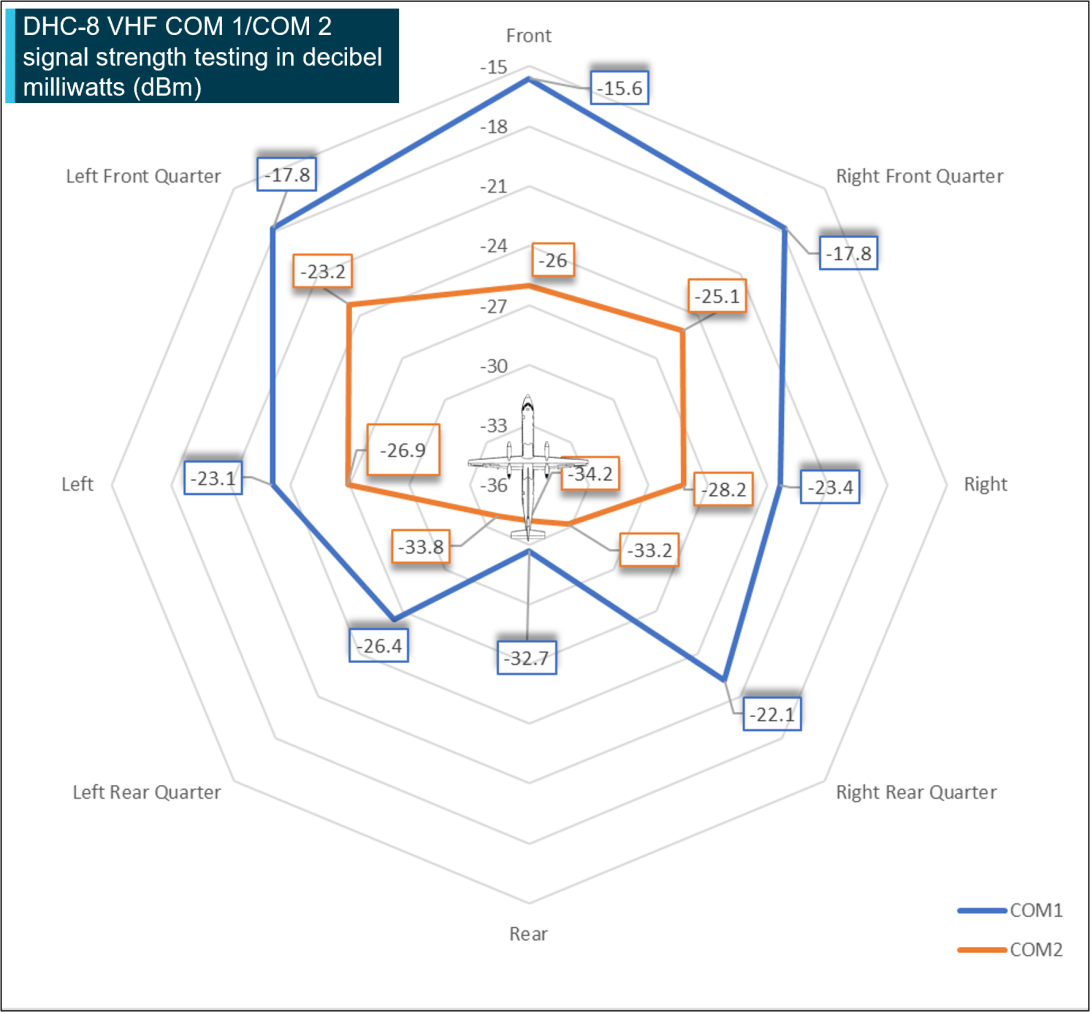Safety advisory notice
To operators of De Havilland Aircraft of Canada Limited DHC-8 aircraft
Reduced quality of radio signal reception and transmission on De Havilland Aircraft of Canada Limited DHC-8 (Dash 8) aircraft during ground-based communication
What happened

On 29 September 2023, a Lancair Super ES taxied for runway 36 at Mildura, Victoria at about the same time a Dash 8 began to taxi for runway 09.
Both aircraft gave taxi, entering and backtracking calls on the local common traffic advisory frequency. The Dash 8 crew did not hear the calls from the Lancair, nor did the Lancair pilot hear the calls from the Dash 8. The crew of the Dash 8 gave a rolling call and had commenced their take-off on runway 09. Shortly after, the pilot of the Lancair gave a rolling call on runway 36. This call was received by the Dash 8 just prior to rotating for take-off, with the crew responding for the Lancair to hold on the runway. Another aircraft taxiing behind the Lancair for runway 36, advised the Lancair to hold position while the Dash 8 departed. The Dash 8 crossed the runway 09/36 intersection while the Lancair remained on the threshold of runway 36.
Why did it happen
The Dash 8 series of aircraft has a VHF antenna for the COM 1 radio on the upper fuselage, and a VHF antenna for the COM 2 radio on the lower fuselage.

Radio frequency interference testing at Mildura Airport was completed by the ATSB, the Australian Communications and Media Authority (ACMA), Mildura Airport management, Airservices and QantasLink in March 2024. Testing identified reduced radio signal transmission and reception quality on a Dash 8 300 aircraft while using VHF COM 2 for ground-based very high frequency (VHF) communications.
Reduced signal strength reception and transmission was identified during ground-based communications on VHF COM 2 when compared to VHF COM 1. This was identified as a factor leading to incomplete, unintelligible or non‑receipt of VHF positional radio broadcast information at non‑towered aerodromes. These broadcasts are normally used to enhance the alerted see‑and‑avoid situational awareness of flight crew and other pilots in the vicinity.

This was of particular importance at Mildura Airport as aircraft positioned on runway thresholds may not be visible to the pilots from each respective aircraft.
Aircraft radio shielding on all Dash 8 aircraft variants can occur during ground operations due to the close proximity of the VHF COM 2 antenna to the ground and airframe shielding which is likely to affect communications resulting in reduced signal strength, reduced clarity of transmissions and impair reception of other radio calls. This can be further exacerbated by physical obstacles, such as hangars and terrain. Furthermore, negative effects on ground‑to‑ground based communications are exacerbated by increased distance between the aircraft.
De Havilland Aircraft of Canada Limited reviewed the testing and on 6 December 2024, issued two flight operations service letters relating to radio communications, with one covering Dash 8 100‑300 series aircraft and the other covering the Dash 8 400 series aircraft. The service letters remind operators that ground based VHF communications are affected by line of sight and can be impacted by buildings, terrain or aircraft structures and that use of VHF COM 1 is more effective for ground‑based communications with other aircraft.
Communications at non‑towered aerodromes
Pilots are responsible for making themselves aware of nearby aircraft and maintaining separation at non‑towered aerodromes. Traditionally, VHF radio broadcasts are made at non‑controlled aerodromes to provide situational awareness, traffic separation and deconfliction to other traffic in the vicinity of the aerodrome.
Broadcasting to other traffic in the vicinity of a non‑controlled aerodrome is known as radio‑alerted see‑and‑avoid and assists by supporting the pilot’s situational awareness. Positional broadcasts rely on the ability of other traffic receiving, comprehending and reacting to this information.
In some aircraft, using an antenna that is positioned underneath the aircraft may not have optimal ground‑based transmission or reception strength and clarity due to airframe shielding. Positional broadcasts are a one‑way communication, so they do not imply receipt of information by other parties unless direct radio contact is made between stations. As a result, in some circumstances, broadcasts may be missed without either pilot realising it, and this affects their shared understanding of the traffic in the vicinity.
Safety advisory notice
AO-2023-050-SAN-01: The Australian Transport Safety Bureau advises all operators and crew of De Havilland Aircraft of Canada Limited DHC-8 (Dash 8) aircraft to consider the use of VHF COM 1 radios for ground‑based communication while operating at non‑controlled aerodromes, to improve radio transmission and reception with other stations.
Read more about this ATSB investigation: Runway incursion involving Lancair, VH-VKP and Bombardier DHC-8-315, VH-TQZ, at Mildura Airport, Victoria, on 29 September 2023


